There may be times when you need to work on an Excel sheet for a prolonged period of time with some unique settings applied, such as a zoom option that is not default, a specific column width or height, or a specific print area. You’ll lose plenty of time if you have to keep resetting these options every time you open that particular workbook to continue your work.
Thankfully, Excel’s Custom Views options lets you save your workbook settings in the custom format in which you want it for quick access later. If you have never used the feature or want to know how to get started with it, here are the steps to Save Excel Workbook Settings Using Custom Views.
How to Save Excel Workbook Settings Using Custom Views
If you are ready to set up a custom view, make sure to first set the current normal view as a custom view so that you can quickly switch back to the normal view whenever you want. To do this:
1. Select the View tab.
2. In the Workbook Views group, click Custom Views. You can also use the keyboard shortcut of Alt+W+ C. This will display the Custom View dialog box.
3. In the Custom Views dialog box, click Add to display the Add View dialog.
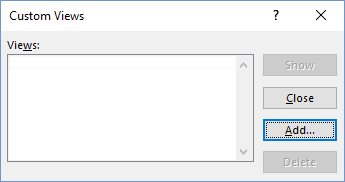
4. In the Add View dialog box, in the Name text box, enter a unique name for the view. I’m going to call this My Normal View and click OK. You can check or uncheck the Print settings and Hidden rows, columns and filter settings checkboxes depending on what you want to include in the view.
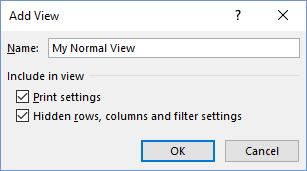
5. Now, we’ll create a custom view. (You can set up the view according to your requirements.) Let us, for example create a view with 130% zoom, increase the height of the row to 20 and set a custom print area in the range A1: J13.
a. I’ll click the + icon on the slider to move it to a 130% zoom level.
b. Ill select the worksheet, right-click anywhere inside it and select Row height. In the Row height dialog, I’ll enter 20 to increase the row height to 20.
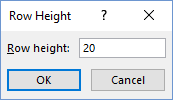
c. On the worksheet, I’ll select the range A1: J13. Then I’ll select the Page Layout tab. In the Page setup group, I’ll click Print Area->Set print area to define my print area.
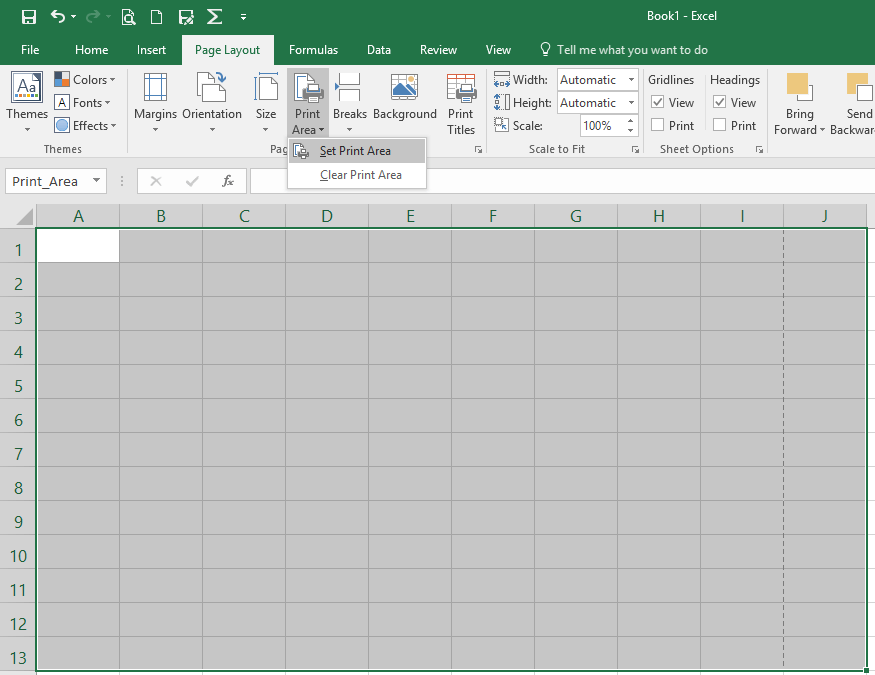
6. Then on the View tab, in the Workbook Views group, click Custom Views.
7. In the Custom Views dialog box, click Add.
8. In the Name text box, enter a unique name for the custom view and in the Include in view section, check or uncheck the boxes as desired. I’ll use the name My FB Custom View for the newly created custom view. Then click OK.
9. Now when you want to switch views, you just have to go to the View tab, Workbook Views group, and click Custom Views or use the keyboard shortcut of Alt+W+ C.
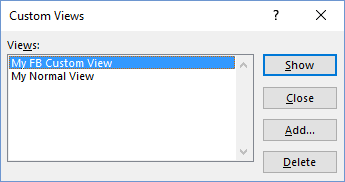
The Custom Views dialog box will be displayed and you can double-click a view you want Excel to display.
Custom views are only available in the workbook in which you created them. They also apply only to the worksheet that was active when you created the custom view. When you select a custom view to display for a worksheet that is not currently active, Excel activates that worksheet and applies the view. So, you must create custom views for each worksheet in each workbook separately and be sure to save your workbook with your custom views if you want the feature to work as per your specifications.
For more cool Excel tips and tutorials, be sure to visit our Archives center by clicking here.
Leave a Reply